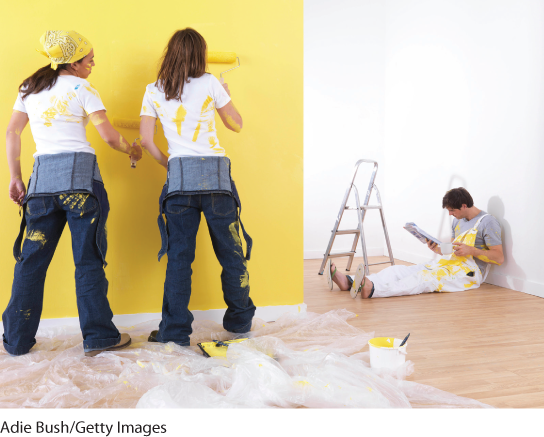Social Loafing
Social facilitation experiments test the effect of others’ presence on the performance of an individual task, such as shooting pool. But what happens when people perform as a group—say, in a team tug-of-war? Would you exert more, less, or the same effort as in a one-on-one match?
To find out, a University of Massachusetts research team asked blindfolded students “to pull as hard as you can” on a rope. When they fooled the students into believing three others were also pulling behind them, students exerted only 82 percent as much effort as when they knew they were pulling alone (Ingham et al., 1974). And consider what happened when blindfolded people seated in a group clapped or shouted as loudly as they could while hearing (through headphones) other people clapping or shouting loudly (Latané, 1981). When they thought they were part of a group effort, the participants produced about one-third less noise than when clapping or shouting “alone.”
This diminished effort is called social loafing (Jackson & Williams, 1988; Latané, 1981). Experiments in the United States, India, Thailand, Japan, China, and Taiwan have found social loafing on various tasks, though it was especially common among men in individualist cultures (Karau & Williams, 1993). What causes social loafing? When people act as part of a group, they may
- feel less accountable and therefore worry less about what others think.
- view their individual contributions as dispensable (Harkins & Szymanski, 1989; Kerr & Bruun, 1983).
- overestimate their own contributions, downplaying others’ actions (Schroeder et al., 2016).
- slack off (as you perhaps have observed on group assignments) if they share equally in the benefits, regardless of how much they contribute. Unless highly motivated and strongly identified with the group, people may free ride on others’ efforts.

Working hard, or hardly working? In group projects, social loafing often occurs, as individuals free ride on the efforts of others.